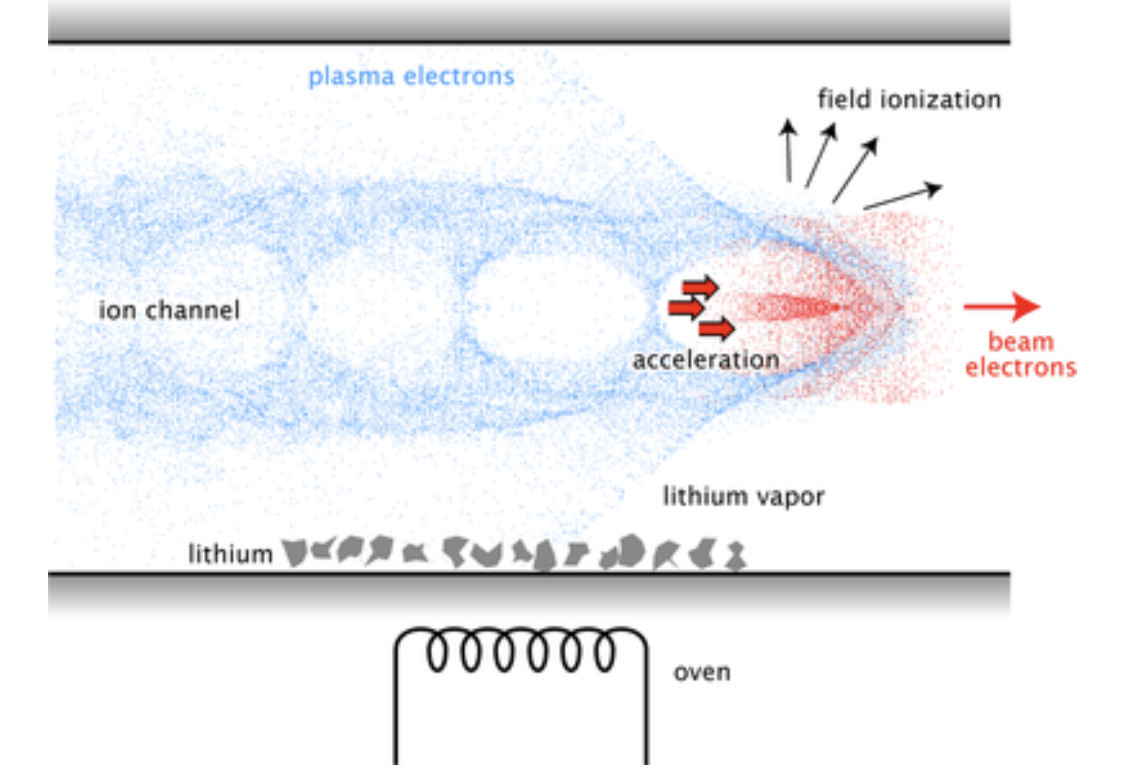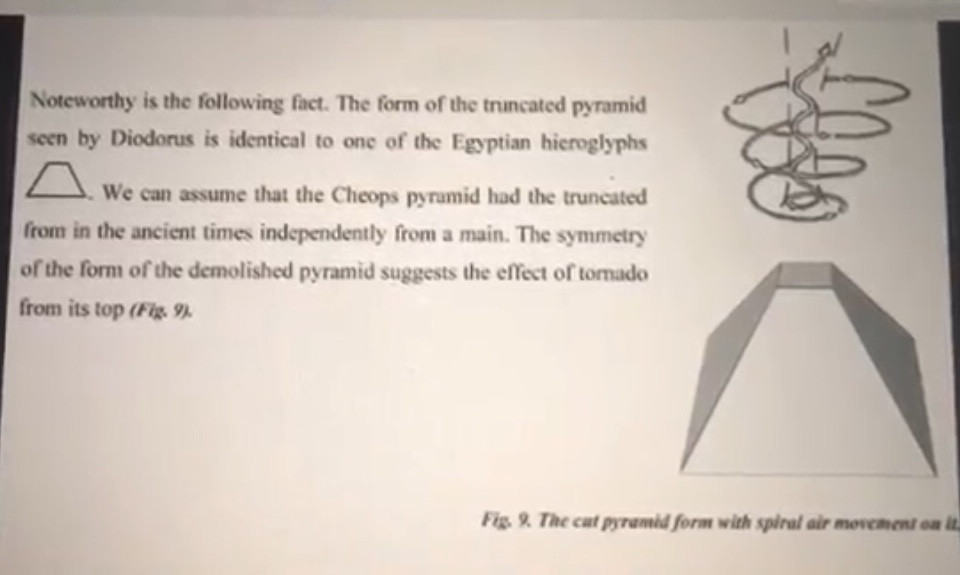🙏💗☀️God is the only Truth that Exists in all of His creation. Since forever.
A C RE AT ION
An electrolaser is a type of electroshock weapon that is also a directed-energy weapon. It uses lasers to form an electrically conductive laser-induced plasma channel (LIPC). A fraction of a second later, a powerful electric current is sent down this plasma channel and delivered to the target, thus functioning overall as a large-scale, high energy, long-distance version of the Taser electroshock gun.
Alternating current is sent through a series of step-up transformers, increasing the voltage and decreasing the current. The final voltage may be between 108 and 109 volts.[citation needed] This current is fed into the plasma channel created by the laser beam.
A laser-induced plasma channel (LIPC) is formed by the following process:
A laser emits a laser beam into the air.
The laser beam rapidly heats and ionizes surrounding gases to form plasma.
The plasma forms an electrically conductive plasma channel.
Because a laser-induced plasma channel relies on ionization, gas must exist between the electrolaser weapon and its target. If a laser-beam is intense enough, its electromagnetic field is strong enough to rip electrons off of air molecules, or whatever gas happens to be in between, creating plasma. Similar to lightning, the rapid heating also creates a sonic boom.[citation needed]
A plasma consists of a fluid of positive and negative charged particles, generally created by heating or photo-ionizing (direct / tunneling / multi-photon / barrier-suppression) a dilute gas. Under normal conditions the plasma will be macroscopically neutral (or quasi-neutral), an equal mix of electrons and ions in equilibrium.
However, if a strong enough external electric or electromagnetic field is applied, the plasma electrons, which are very light in comparison to the background ions (by a factor of 1836), will separate spatially from the massive ions creating a charge imbalance in the perturbed region.
A particle injected into such a plasma would be accelerated by the charge separation field, but since the magnitude of this separation is generally similar to that of the external field, apparently nothing is gained in comparison to a conventional system that simply applies the field directly to the particle. But, the plasma medium acts as the most efficient transformer (currently known) of the transverse field of an electromagnetic wave into longitudinal fields of a plasma wave. In existing accelerator technology various appropriately designed materials are used to convert from transverse propagating extremely intense fields into longitudinal fields that the particles can get a kick from.
This process is achieved using two approaches: standing-wave structures (such as resonant cavities) or traveling-wave structures such as disc-loaded waveguides etc. But, the limitation of materials interacting with higher and higher fields is that they eventually get destroyed through ionization and breakdown. Here the plasma accelerator science provides the breakthrough to generate, sustain, and exploit the highest fields ever produced by science in the laboratory.
What makes the system useful is the possibility of introducing waves of very high charge separation that propagate through the plasma similar to the traveling-wave concept in the conventional accelerator. The accelerator thereby phase-locks a particle bunch on a wave and this loaded space-charge wave accelerates them to higher velocities while retaining the bunch properties.
Currently, plasma wakes are excited by appropriately shaped laser pulses or electron bunches. Plasma electrons are driven out and away from the center of wake by the ponderomotive force or the electrostatic fields from the exciting fields (electron or laser). Plasma ions are too massive to move significantly and are assumed to be stationary at the time-scales of plasma electron response to the exciting fields.
As the exciting fields pass through the plasma, the plasma electrons experience a massive attractive force back to the center of the wake by the positive plasma ions chamber, bubble or column that have remained positioned there, as they were originally in the unexcited plasma. This forms a full wake of an extremely high longitudinal (accelerating) and transverse (focusing) electric field. The positive charge from ions in the charge-separation region then creates a huge gradient between the back of the wake, where there are many electrons, and the middle of the wake, where there are mostly ions. Any electrons in between these two areas will be accelerated (in self-injection mechanism). In the external bunch injection schemes the electrons are strategically injected to arrive at the evacuated region during maximum excursion or expulsion of the plasma electrons.
A beam-driven wake can be created by sending a relativistic proton or electron bunch into an appropriate plasma or gas.[19] In some cases, the gas can be ionized by the electron bunch, so that the electron bunch both creates the plasma and the wake. This requires an electron bunch with relatively high charge and thus strong fields. The high fields of the electron bunch then push the plasma electrons out from the center, creating the wake.
Similar to a beam-driven wake, a laser pulse can be used to excite the plasma wake. As the pulse travels through the plasma, the electric field of the light separates the electrons and nucleons in the same way that an external field would.
If the fields are strong enough, all of the ionized plasma electrons can be removed from the center of the wake: this is known as the "blowout regime". Although the particles are not moving very quickly during this period, macroscopically it appears that a "bubble" of charge is moving through the plasma at close to the speed of light. The bubble is the region cleared of electrons that is thus positively charged, followed by the region where the electrons fall back into the center and is thus negatively charged. This leads to a small area of very strong potential gradient following the laser pulse.
In the linear regime, plasma electrons aren't completely removed from the center of the wake. In this case, the linear plasma wave equation can be applied. However, the wake appears very similar to the blowout regime, and the physics of acceleration is the same.
It is this "wakefield" that is used for particle acceleration. A particle injected into the plasma near the high-density area will experience an acceleration toward (or away) from it, an acceleration that continues as the wakefield travels through the column, until the particle eventually reaches the speed of the wakefield. Even higher energies can be reached by injecting the particle to travel across the face of the wakefield, much like a surfer can travel at speeds much higher than the wave they surf on by traveling across it. Accelerators designed to take advantage of this technique have been referred to colloquially as "surfatrons".
Laser-solid target based ion acceleration has become an active area of research, especially since the discovery of Target Normal Sheath Acceleration. This new scheme offers further improvements in hadrontherapy, fusion fast ignition and sources for fundamental research. Nonetheless, the maximum energies achieved so far with this scheme are in the order of 100 MeV energies.
The main laser-solid acceleration scheme is Target Normal Sheath Acceleration, TNSA as it is usually referred as. TNSA like other laser based acceleration techniques is not capable of directly accelerating the ions. Instead it is a multi-step process consisting of several stages each with its associated difficulty to model mathematically. For this reason, so far there exists no perfect theoretical model capable of producing quantitative predictions for the TNSA mechanism. Particle-in-Cell simulations are usually employed to efficiently achieve predictions.
The scheme employs a solid target that interacts firstly with the laser prepulse, this ionises the target turning it into a plasma and causing a pre-expansion of the target front. Which produces an underdense plasma region at the front of the target, the so-called preplasma. Once the main laser pulse arrives at the target front it will then propagate through this underdense region and be reflected from the front surface of the target propagating back through the preplasma. Throughout this process the laser has heated up the electrons in the underdense region and accelerated them via stochastic heating.
This heating process is incredibly important, producing a high temperature electron populations is key for the next steps of the process. The importance of the preplasma in the electron heating process has recently been studied both theoretically and experimentally showing how longer preplasmas lead to stronger electron heating and an enhancement in TNSA. The hot electrons propagate through the solid target and exit it through the rear end. In doing so, the electrons produce an incredibly strong electric field, in the order of TV/m, through charge separation. This electric field, also referred to as the sheath field due to its resemblance with the shape of a sheath from a sword, is responsible for the acceleration of the ions. On the rear face of the target there is a small layer of contaminants (usually light hydrocarbons and water vapor).
These contaminants are ionised by the strong electric field generated by the hot electrons and then accelerated. Which leads to an energetic ion beam and completes the acceleration process.
aim
/eɪm/
Origin
Middle English: from Old French amer, variant of esmer (from Latin aestimare ‘assess, estimate’), reinforced by aemer, aesmer (from late Latin adaestimare, intensified form of aestimare ).
late Middle English (originally in the sense ‘comprehension, intuition’, also ‘valuing, a valuation’): from Latin aestimatio(n- ), from aestimare ‘determine, appraise’ (see estimate).
estimate (plural estimates)
A rough calculation or assessment of the value, size, or cost of something.
(construction and business) A document (or verbal notification) specifying how much a job is likely to cost.
An upper limitation on some positive quantity.
Synonyms
estimation
appraisal
From Middle English apreisen, from Old French aprisier (“apraise, set a price on”) (compare modern French apprécier), from Late Latin appretiare, from ad- + Latin pretium (“price, value”) (English precious), from which also appreciate, a doublet.
Verb
appraise (third-person singular simple present appraises, present participle appraising, simple past and past participle appraised)
(transitive) To determine the value or worth of (something), particularly as a person appointed for this purpose.
Synonyms: (archaic) apprise, (archaic) apprize
(transitive) To consider comprehensively.
(transitive) To judge the performance of someone, especially a worker.
At the end of the contract, you will be appraised by your line manager.
(transitive) To estimate; to conjecture.
(transitive) To praise; to commend.
From Middle English commenden, from Old French comender, from Latin commendō (“commend, entrust to, commit, recommend”), from com- + mandare (“to commit, intrust, enjoin”), from manus (“hand”) + dare (“to put”). Doublet of command.
commend (third-person singular simple present commends, present participle commending, simple past and past participle commended)
(transitive) To congratulate or reward.
(transitive) To praise or acclaim. quotations ▼
(transitive) To entrust or commit to the care of someone else.
(transitive) To mention by way of courtesy, implying remembrance and goodwill.
(transitive) To recommend.
(transitive, dated) To adorn; to set off.
Related terms
commendable
commendation
commend (plural commends)
(obsolete) Commendation; praise.
(obsolete, in the plural) Compliments; greetings.
A COMPLEMENTUM
complēmentum n (genitive complēmentī); second declension
complement (that which fills up or completes)
Borrowed from Latin completio, completionem, from complere (“to fill up, complete”); comparable to English complete + -ion.
re- + complete + -ion.
Noun
recompletion (countable and uncountable, plural recompletions)
(uncountable) The act of completing again.
(countable) Another completion after a first one (such as when construction on a building is completed, inspected, repaired, and recompleted).
For we are labourers together with God: ye are God's husbandry, ye are God's building.
According to the grace of God which is given unto me, as a wise masterbuilder, I have laid the foundation, and another buildeth thereon. But let every man take heed how he buildeth thereupon.
For other foundation can no man lay than that is laid, which is Jesus Christ.
Now if any man build upon this foundation gold, silver, precious stones, wood, hay, stubble;
Every man's work shall be made manifest: for the day shall declare it, because it shall be revealed by fire; and the fire shall try every man's work of what sort it is.
If any man's work abide which he hath built thereupon, he shall receive a reward.
Laser absorption spectrometry (LAS) refers to techniques that use lasers to assess the concentration or amount of a species in gas phase by absorption spectrometry (AS).
Optical spectroscopic techniques in general, and laser-based techniques in particular, have a great potential for detection and monitoring of constituents in gas phase. They combine a number of important properties, e.g. a high sensitivity and a high selectivity with non-intrusive and remote sensing capabilities. Laser absorption spectrometry has become the foremost used technique for quantitative assessments of atoms and molecules in gas phase. It is also a widely used technique for a variety of other applications, e.g. within the field of optical frequency metrology or in studies of light matter interactions. The most common technique is tunable diode laser absorption spectroscopy (TDLAS) which has become commercialized and is used for a variety of applications.
Cation comes from the Greek katión, meaning “going down,” and anion comes from the Greek aniṓn, “going up.” The cat- in cation is a form of cata-, meaning “down” (it's the same root used in cathode and catalyst). The an- in anion is a form of ana-, meaning “up” (it's the same root used in anode).
The word was coined in 1834 from the Greek ἄνοδος (anodos), 'ascent', by William Whewell, who had been consulted by Michael Faraday over some new names needed to complete a paper on the recently discovered process of electrolysis. In that paper Faraday explained that when an electrolytic cell is oriented so that electric current traverses the "decomposing body" (electrolyte) in a direction "from East to West, or, which will strengthen this help to the memory, that in which the sun appears to move", the anode is where the current enters the electrolyte, on the East side: "ano upwards, odos a way; the way which the sun rises".
A solar deity or sun deity is a deity who represents the Sun, or an aspect of it. Such deities are usually associated with power and strength. Solar deities and Sun worship can be found throughout most of recorded history in various forms. The Sun is sometimes referred to by its Latin name Sol or by its Greek name Helios. The English word sun derives from Proto-Germanic *sunnǭ.
Predynasty Egyptian beliefs attribute Atum as the Sun god and Horus as god of the sky and Sun. As the Old Kingdom theocracy gained influence, early beliefs were incorporated into the expanding popularity of Ra and the Osiris-Horus mythology. Atum became Ra-Atum, the rays of the setting Sun. Osiris became the divine heir to Atum's power on Earth and passed his divine authority to his son, Horus. Other early Egyptian myths imply that the Sun is incorporated with the lioness Sekhmet at night and is reflected in her eyes; or that the Sun is found within the cow Hathor during the night and reborn each morning as her son (bull).
Mesopotamian Shamash played an important role during the Bronze Age, and "my Sun" was eventually used to address royalty. Similarly, South American cultures have a tradition of Sun worship as with the Incan Inti.
The Sun was sometimes envisioned as traveling through the sky in a boat. A prominent example is the solar barque used by Ra in ancient Egyptian mythology. The Neolithic concept of a "solar barge" (also "solar bark", "solar barque", "solar boat" and "sun boat", a mythological representation of the Sun riding in a boat) is found in the later myths of ancient Egypt, with Ra and Horus. Several Egyptian kings were buried with ships that may have been intended to symbolize the solar barque, including the Khufu ship that was buried at the foot of the Great Pyramid of Giza.
The only completely preserved portrait of the king is a three-inch high ivory figurine found in a temple ruin of a later period at Abydos in 1903. All other reliefs and statues were found in fragments, and many buildings of Khufu are lost. Everything known about Khufu comes from inscriptions in his necropolis at Giza and later documents. For example, Khufu is the main character noted in the Westcar Papyrus from the 13th dynasty.
Most documents that mention king Khufu were written by ancient Egyptian and Greek historians around 300 BC. Khufu's obituary is presented there in a conflicting way: while the king enjoyed a long-lasting cultural heritage preservation during the period of the Old Kingdom and the New Kingdom, the ancient historians Manetho, Diodorus and Herodotus hand down a very negative depiction of Khufu's character. Thanks to these documents, an obscure and critical picture of Khufu's personality persists.
Khufu is well-known under his Hellenized name Χέοψ, Khéops or Cheops (/ˈkiːɒps/, KEE-ops, by Diodorus and Herodotus) and less well-known under another Hellenized name, Σοῦφις, Súphis (/ˈsuːfɪs/, SOO-fis, by Manetho).[5][10] A rare version of the name of Khufu, used by Josephus, is Σόφε, Sofe (/ˈsɒfi/, SOF-ee).[2] Arab historians, who wrote mystic stories about Khufu and the Giza pyramids, called him Saurid (Arabic: سوريد) or Salhuk (سلهوق).[14]
sophistication (countable and uncountable, plural sophistications)
Enlightenment or education.
Cultivated intellectual worldliness; savoir-faire.
Deceptive logic; sophistry.
Falsification or contamination.
Complexity.
The police force were unable to deal with the sophistication of the criminal network.
Ability to deal with complexity.
From Middle English sophisticacion, sophisticacioun, sophisticacoun, from Old French sofisticacion, sophisticacion and Medieval Latin sophisticātio, -iōnis.
phi (plural phis)
Φ, the 21st letter of the Euclidean and modern Greek alphabet, usually romanized as "ph".
(mathematics) The golden ratio.
A visual illusion whereby a sequential pattern of lights produces a false sense of motion.
Hiker-Kayaker-Bicyclist-Paddleboarder (⊙﹏⊙✿) life➭the way I see it, posted here ☯︎_0️⃣social.creditz
fully expecting to see jack pumpkinhead to appear in this image
What else springs to mind?
Hiker-Kayaker-Bicyclist-Paddleboarder (⊙﹏⊙✿) life➭the way I see it, posted here ☯︎_0️⃣social.creditz
nevermind the mind. mind so is boooooring :)
369




